日本の厚生労働省が本年6月から、いわゆる「大衆薬」(一般用医薬品) を副作用
リスク別に3分類し、風邪薬や漢方 (生薬処方) など「伝統薬」の通信販売を禁
じる方針で、省令を改正ずみ、という驚くべきニュースを、最近(海外で)知っ
た。これは、製薬会社、医師会、薬剤師会からの不当な圧力によるものであるこ
とは明らかである。(憲法が保証している)市民一人一人の意志/判断による薬
の「選択の自由」を束縛するものであり、断じて容認できない! 「憲法違反」
だからだ!
新しい薬を開発している専門家である私自身の見解によれば、製薬会社、医師、
薬剤師の間には、伝統薬に対する知識や理解がはなはだ乏しい。その理由の一つ
は、大学時代以来、そのような専門教育をほとんど受けていないからだ。従って、
薬剤師が店頭で、患者に「副作用リスク」に関して十分な説明ができるとは思え
ないし、だいたい天然物由来の「伝統薬」(生薬)には、製薬会社が製造する合
成化学医薬品よりもずっと、副作用が少ない。だから、伝統的に生き残ったのだ!
例えば、ミツバチの生産する「プロポリス」は、古代エジプト時代から数千年近く、
風邪ばかりではなく色々な疫病の治療(伝承薬)やミイラの長期保存に使用
されてきた。 従って、プロポリスなどの生薬を締め出すのは、論理的にもはなはだ
矛盾している。
サリドマイド児などの「薬害」被害者たちは、薬剤師側の味方をしているようだが、
「サリドマイド」は、生薬ではなく、純然たる合成化学薬品で、(副作用のテス
トを怠った)製薬会社から医師や薬局を介して、妊婦たちに渡され、大量の奇形
児の誕生をもたらした。医師や薬剤師の無知(不勉強)から生じた悲劇なのだ!
通販のせいではない! 彼らは何かを勘違いしている!
そして、妊婦ではなく、癌患者やハンセン氏病患者などに使用すれば、サリドマイドは
「副作用のない」立派な治療薬なのだ! 言いかえれが、最初の「処方箋」が間違って
いたのだ!
最後に強調したいことは、「通販」とは、単なる「流通手段」の1つに過ぎない。
商品が書籍であれ、薬であれ、健康食品サプルメントであれ、下着であれ、宝石
であれ、店頭で販売できるが、通信(ネット)では販売(通販)できない、という
理屈は全く成り立たない!
判り易い 「本」 の出版を例にとって、日本の業界に巣くう 「不合理性」を示そう!
書店の棚に一週間以上置いてもらえる新刊の本の数は、(ベストセラーを除いて)
実はごく少数である。あとはamazon.co.jp などの通販を介して、出版社は本を販
売せざるをえない。もし、(薬の例と同様) 文科省が本の「通販禁止令」を出した
ら一体どうなるだろうか? (講談社などごく少数の大手出版社を除いて) 大部分
の出版社は (それでなくとも「火の車」なのに) 本が売れず、瞬く間に倒産する
だろう。。。
つまり、業界には根強い「偏見」と「差別」がある。それを打破するのが「通販」制度
なのだ。読者自身で、本の良し悪しを判断し購入できる。書店による差別待遇を乗り
越えて「民主的」に全ての本が売買されるわけである。従って、「通販禁止」は明らかに
「民主主義の精神」に反するのだ!
2009年2月27日金曜日
2009年2月17日火曜日
NF講演会のお知らせ(2009年春)
演題:NFや癌に効くプロポリスなどの天然PAK遮断物質の開発研究
演者: 丸田 浩博士 (「NF Cure Japan」 マネジャー)
主催: シクロケム(東京/神戸) http://www.cyclochem.com/
関西方面:
日時: 5月2日(土)午後2時ー4時
会場: 神戸国際会館(三宮)8階5号室
HP(アクセス): http://www.kih.co.jp/map/index.html
住所: 兵庫県神戸市中央区御幸通8丁目1番6号
(三宮駅/JR/阪神/阪急線から徒歩3分)
定員: 先着約45名(入場無料)
東京方面:
日時: 5月23日(土)午後2時ー4時
会場: 東京国際フォーラム 会議室「G407」(スクール形式、バリア・フリー)
HP(アクセス): http://www.t-i-forum.co.jp/function/map/
住所: 都内千代田区丸の内三丁目5番1号
JR山手線/京浜東北線の有楽町駅北口から徒歩3分(環状線の内側)
定員: 先着約45名(入場無料)
参加申込先: 大根さん(メール:daikon_tom@nifty.ne.jp)
(出席会場について、神戸か東京かを明記すること)
演者: 丸田 浩博士 (「NF Cure Japan」 マネジャー)
主催: シクロケム(東京/神戸) http://www.cyclochem.com/
関西方面:
日時: 5月2日(土)午後2時ー4時
会場: 神戸国際会館(三宮)8階5号室
HP(アクセス): http://www.kih.co.jp/map/index.html
住所: 兵庫県神戸市中央区御幸通8丁目1番6号
(三宮駅/JR/阪神/阪急線から徒歩3分)
定員: 先着約45名(入場無料)
東京方面:
日時: 5月23日(土)午後2時ー4時
会場: 東京国際フォーラム 会議室「G407」(スクール形式、バリア・フリー)
HP(アクセス): http://www.t-i-forum.co.jp/function/map/
住所: 都内千代田区丸の内三丁目5番1号
JR山手線/京浜東北線の有楽町駅北口から徒歩3分(環状線の内側)
定員: 先着約45名(入場無料)
参加申込先: 大根さん(メール:daikon_tom@nifty.ne.jp)
(出席会場について、神戸か東京かを明記すること)
2009年2月13日金曜日
MGO (Methylglyoxal) Is the Major Antibiotic
of Manuka Honeys from NZ (New Zealand)
Over 80% of honey contents are sugars (mainly glucose and fructose), but
recently some honey samples, in particular Manuka honeys from NZ, were shown
by a German research team to have a strong anti-bacterial activity, mainly
due to its component called MGO (methylgyoxal). Therefore, Manuka honeys
are now called "super" honeys, fighting against bacteria.
In an early 2008, Prof. Thomas Henle and his colleagues at Technical University
of Dresden in Germany reported that MGO is directly responsible for the
anti-bacterial activity of Manuka honey from NZ. The MIC (minimum inhibitory
concentration) of MGO for both Gram-positive and -negative bacteria were
1.1 mM. The MGO levels in the Manuka honeys were up to 250 fold higher than
in the non-Manuka honeys.
Among these Manuka honeys, a Manuka Health honey product called "UMF 25"
was the richest in MGO, containing 761 mg/kg. Interestingly, the UMF (Unique
Manuka Factor) values appear to be directly related to the MGO content.
In addition, Manuka Health produces a unique CAPE-based propolis extract
called "Bio 30" which was recently shown to suppress almost completely the
growth of NF (neurofibromatosis) tumor, pancreatic and breast cancer as
well as glioma xenografts in mice.
The outcome of "Bio 30 Trials for NF2 Tumors" with around 50 patients
has revealed that at least 30-40% have clearly got a benefit from Bio 30,
although the trials are still in an early stage (6-12 months). For detail,
visit the following website: http://www.advocurenf2.org/03_bio30.html
Mol Nutr Food Res. 2008 Apr;52: 483-9.
Identification and quantification of methylglyoxal as the dominant antibacterial
constituent of Manuka (Leptospermum scoparium) honeys from New Zealand.
Mavric E, Wittmann S, Barth G, Henle T.
Institute of Food Chemistry, Technische Hochschule der Dresden, Germany.
Phytother Res. 2009 Feb; 23: 226-30.
CAPE (caffeic acid phenethyl ester)-based propolis extract (Bio 30) suppresses
the growth of human neurofibromatosis (NF) tumor xenografts in mice.
Demestre M, Messerli SM, Celli N, Shahhossini M, Kluwe L, Mautner V, Maruta
H.
UKE (Universitaets Klinikum Eppendorf), Hamburg 20246, Germany.
continued
recently some honey samples, in particular Manuka honeys from NZ, were shown
by a German research team to have a strong anti-bacterial activity, mainly
due to its component called MGO (methylgyoxal). Therefore, Manuka honeys
are now called "super" honeys, fighting against bacteria.
In an early 2008, Prof. Thomas Henle and his colleagues at Technical University
of Dresden in Germany reported that MGO is directly responsible for the
anti-bacterial activity of Manuka honey from NZ. The MIC (minimum inhibitory
concentration) of MGO for both Gram-positive and -negative bacteria were
1.1 mM. The MGO levels in the Manuka honeys were up to 250 fold higher than
in the non-Manuka honeys.
Among these Manuka honeys, a Manuka Health honey product called "UMF 25"
was the richest in MGO, containing 761 mg/kg. Interestingly, the UMF (Unique
Manuka Factor) values appear to be directly related to the MGO content.
In addition, Manuka Health produces a unique CAPE-based propolis extract
called "Bio 30" which was recently shown to suppress almost completely the
growth of NF (neurofibromatosis) tumor, pancreatic and breast cancer as
well as glioma xenografts in mice.
The outcome of "Bio 30 Trials for NF2 Tumors" with around 50 patients
has revealed that at least 30-40% have clearly got a benefit from Bio 30,
although the trials are still in an early stage (6-12 months). For detail,
visit the following website: http://www.advocurenf2.org/03_bio30.html
Mol Nutr Food Res. 2008 Apr;52: 483-9.
Identification and quantification of methylglyoxal as the dominant antibacterial
constituent of Manuka (Leptospermum scoparium) honeys from New Zealand.
Mavric E, Wittmann S, Barth G, Henle T.
Institute of Food Chemistry, Technische Hochschule der Dresden, Germany.
Phytother Res. 2009 Feb; 23: 226-30.
CAPE (caffeic acid phenethyl ester)-based propolis extract (Bio 30) suppresses
the growth of human neurofibromatosis (NF) tumor xenografts in mice.
Demestre M, Messerli SM, Celli N, Shahhossini M, Kluwe L, Mautner V, Maruta
H.
UKE (Universitaets Klinikum Eppendorf), Hamburg 20246, Germany.
continued
2009年2月9日月曜日
A "Hot" Mystery: Herbal Therapy of Neurofibromatosis
by Corn Lily (???), a source of "Cyclopamine"
A few days ago, just around the moment when we experienced the "hottest" day (over 46oC)
and the worst bush fire around Melbourne which took more than 170 lives and destroyed
so many homes, I received a "mysterious" e-mail from an Indian physician
who claims to live near Washington, DC. He wrote that his patient (or neighbor)
managed to get rid of his/her numerous NF1 neurofibromas by a herbal product
in months, although he did not reveal the specific name of this "miracle"
herb... I asked him to send me a pair of photos of this NF1 patient taken
before and after this herbal treatment, to convince me this miraculous recovery.
Also I added that if this herbal product is inexpensively available on
the market, we would be potentially interested in investigating further
its therapeutics effect on NF1 and NF2 tumor xenografts in mice. Since then
I have never heard from him, and started being puzzled what his real intention
was...
Perhaps it could have been a whisper/hint from God, although I wouldn't believe
in anything other than our own biomedical science. I used to work in California
and hillside of Rocky Mountains in US for a few years, before I moved to
Melbourne for more than two decades ago. If you walk through wet meadows
there, you will find a 1-2 meters tall plant which resembles corn, but its
flower looks like a small lily. It is commonly called "Corn Lily". Shepherds usually
avoid to pass through this area with his or her herd of cows, sheep or goats,
because this plant is teratogenic, causing a series of birth defects such
as cyclopia, if they ingest it while pregnant. It contains an alkaloid of
steroid structure called cyclopamine which blocks the oncogenic "hedgehog"/Gli
signaling pathways that are involved in both blood vessel formation (angiogenesis)
and forebrain development. Since just like thalidomide, teratogenic substances
in general have an anti-cancer potential, the development of cyclopamine
and its water-soluble derivative called IPI-609 as new anti-cancer drugs
are currently under way.
Historically, Corn Lily was used as a pain reliever and anti-convulsive (for
epilepsy). Native American Indians concocted an effective birth control
tea from the roots. Today it is used pharmaceutically to slow the heartbeat
and lower blood pressure.
So this "mysterious" e-mail suddenly reminded me of Corn Lily, and I started
finding a possible link of the "hedgehog"/Gli signaling to NF1 (a RAS GAP)
or PAK signaling. In short, loss of NF1 gene which causes abnormal activation
of RAS and PAK, eventually activates Gli gene, down stream of "hedgehog",
a growth hormone. In other words these two oncogenic pathways work synergestically.
In principle, like anti-PAK products such as Bio 30, cyclopamine or its
derivatives should suppress the growth of PAK-dependent tumors such as NF1/NF2
and pancreatic cancers. In fact, George Feldmann's team at Johns Hopkins
Medical School in Baltimore reported in late 2008 that IPI-609 (a product
of Infinity Pharmaceuticals, Boston) (20 mg/kg) suppresses the growth and
metastasis of pancreatic cancer xenograft in mice, in combination with Gemcitabine
(100 mg/kg) completely. Thus, it would be possible that the "mysterious"
herbal product might cure NF1 neurofibromas miraculously, if it is somehow
related to an ethanol extract of Corn Lily or Chinese (Sichuan) pepper called
"Hua Jiao" which we found a few years ago selectively blocks the oncogenic
PAK pathways...
Sherlock Holmes said: Perhaps this "mysterious" e-mail informer might live
somewhere between Baltimore and Washington, DC.
Dr. Watson asked: Why?
Mol Cancer Ther. 2008 Sep;7(9):2725-35.
An orally bioavailable small-molecule inhibitor of Hedgehog signaling (IPI-609)
inhibits tumor initiation and metastasis in pancreatic cancer.
Feldmann G, Fendrich V, McGovern K, Bedja D, Bisht S, Alvarez H, Koorstra
JB, Habbe N, Karikari C, Mullendore M, Gabrielson KL, Sharma R, Matsui W,
Maitra A.
Department of Pathology, Johns Hopkins University School of Medicine, CRB2,
Room 316, 1550 Orleans Street, Baltimore, MD 21231, USA. gfeldma4@jhmi.edu
Pioneer work by Philip Beachy on Hedgehog and Cyclopamine
Philip A. Beachy, Ph.D., a Howard Hughes Medical Institute (HHMI) investigator,
moved from Johns Hopkins University Medical School to Stanford University
Cancer Center around 2006.
Beachy and colleagues during their Johns Hopkins days found that cyclopamine
blocks the Hedgehog pathway. Furthermore, in mouse studies, cyclopamine
caused permanent regression of grafted human and rodent tumors. This research
was published in Nature around 2003.
Even at 6 to 8 months after treatment ended, tumors did not regrow. "There
is good evidence in a number of tissues that cancers are propagated by a
minority of cells that seem to have properties of stem cells," he explained.
"These cancer stem cells probably derive from tissue stem cells." Their
results suggest that the cancer stem cells were wiped out, Beachy said. Hedgehog
and another signaling pathway called Wnt have roles in stimulating self-renewal
for stem cells.
Meanwhile, several drug companies such as Curis and Infinity Pharmaceuticals are
developing Hedgehog antagonists, and Beachy is pushing hard to get cyclopamine into
clinical trials, including working with farmers in Utah to harvest large
quantities of corn lily, the major source of this drug.
http://jnci.oxfordjournals.org/cgi/content/full/97/3/168
Clinical Trials (phase II) of Hedgehog Inhibitor "GDC-0449" in 2008:
HhAntag691 (GDC-0449), an inhibitor of the hedgehog (Hh) signaling pathway,
has been used to treat medulloblastoma in animal models and has recently
entered clinical trials for a variety of solid tumors.
GDC-0449 (IC50=40 nM) developed by Curis Inc. is a synthetic benzoimidazole derivative,
clearly unrelated to cyclopamine in the chemical structure,
and much more potent than cyclopamine (IC50=500 nM) in inhibiting Hedgehog (Hh)
signaling and the growth of cancer cells. It is the first Hh inhibitor in the clinical trials.
Curis Inc. reports that it is moving forward with its collaboration with
Genentech Inc. on development of Curis' Hedgehog antagonist drug for
treating cancer.
Genentech in Southern California plans to launch three Phase 2 clinical
trial plans for GDC-0449 in 2008. Upon the treatment of the first patient in
the trial, Curis in Cambridge/Boston could receive a $3 million cash milestone payment.
The planned Phase 2 clinical trials include a trial in metastatic
colorectal cancer during the first quarter 2008, and trials in advanced
basal cell carcinoma, as well as a trial in an undisclosed advanced solid
epithelial tumor during the second half of 2008. Once testing has begun
on that epithelial tumor, a second $3 million payment could be triggered.
http://www.bizjournals.com/eastbay/stories/2008/03/10/daily80.html
and the worst bush fire around Melbourne which took more than 170 lives and destroyed
so many homes, I received a "mysterious" e-mail from an Indian physician
who claims to live near Washington, DC. He wrote that his patient (or neighbor)
managed to get rid of his/her numerous NF1 neurofibromas by a herbal product
in months, although he did not reveal the specific name of this "miracle"
herb... I asked him to send me a pair of photos of this NF1 patient taken
before and after this herbal treatment, to convince me this miraculous recovery.
Also I added that if this herbal product is inexpensively available on
the market, we would be potentially interested in investigating further
its therapeutics effect on NF1 and NF2 tumor xenografts in mice. Since then
I have never heard from him, and started being puzzled what his real intention
was...
Perhaps it could have been a whisper/hint from God, although I wouldn't believe
in anything other than our own biomedical science. I used to work in California
and hillside of Rocky Mountains in US for a few years, before I moved to
Melbourne for more than two decades ago. If you walk through wet meadows
there, you will find a 1-2 meters tall plant which resembles corn, but its
flower looks like a small lily. It is commonly called "Corn Lily". Shepherds usually
avoid to pass through this area with his or her herd of cows, sheep or goats,
because this plant is teratogenic, causing a series of birth defects such
as cyclopia, if they ingest it while pregnant. It contains an alkaloid of
steroid structure called cyclopamine which blocks the oncogenic "hedgehog"/Gli
signaling pathways that are involved in both blood vessel formation (angiogenesis)
and forebrain development. Since just like thalidomide, teratogenic substances
in general have an anti-cancer potential, the development of cyclopamine
and its water-soluble derivative called IPI-609 as new anti-cancer drugs
are currently under way.
Historically, Corn Lily was used as a pain reliever and anti-convulsive (for
epilepsy). Native American Indians concocted an effective birth control
tea from the roots. Today it is used pharmaceutically to slow the heartbeat
and lower blood pressure.
So this "mysterious" e-mail suddenly reminded me of Corn Lily, and I started
finding a possible link of the "hedgehog"/Gli signaling to NF1 (a RAS GAP)
or PAK signaling. In short, loss of NF1 gene which causes abnormal activation
of RAS and PAK, eventually activates Gli gene, down stream of "hedgehog",
a growth hormone. In other words these two oncogenic pathways work synergestically.
In principle, like anti-PAK products such as Bio 30, cyclopamine or its
derivatives should suppress the growth of PAK-dependent tumors such as NF1/NF2
and pancreatic cancers. In fact, George Feldmann's team at Johns Hopkins
Medical School in Baltimore reported in late 2008 that IPI-609 (a product
of Infinity Pharmaceuticals, Boston) (20 mg/kg) suppresses the growth and
metastasis of pancreatic cancer xenograft in mice, in combination with Gemcitabine
(100 mg/kg) completely. Thus, it would be possible that the "mysterious"
herbal product might cure NF1 neurofibromas miraculously, if it is somehow
related to an ethanol extract of Corn Lily or Chinese (Sichuan) pepper called
"Hua Jiao" which we found a few years ago selectively blocks the oncogenic
PAK pathways...
Sherlock Holmes said: Perhaps this "mysterious" e-mail informer might live
somewhere between Baltimore and Washington, DC.
Dr. Watson asked: Why?
Mol Cancer Ther. 2008 Sep;7(9):2725-35.
An orally bioavailable small-molecule inhibitor of Hedgehog signaling (IPI-609)
inhibits tumor initiation and metastasis in pancreatic cancer.
Feldmann G, Fendrich V, McGovern K, Bedja D, Bisht S, Alvarez H, Koorstra
JB, Habbe N, Karikari C, Mullendore M, Gabrielson KL, Sharma R, Matsui W,
Maitra A.
Department of Pathology, Johns Hopkins University School of Medicine, CRB2,
Room 316, 1550 Orleans Street, Baltimore, MD 21231, USA. gfeldma4@jhmi.edu
Pioneer work by Philip Beachy on Hedgehog and Cyclopamine
Philip A. Beachy, Ph.D., a Howard Hughes Medical Institute (HHMI) investigator,
moved from Johns Hopkins University Medical School to Stanford University
Cancer Center around 2006.
Beachy and colleagues during their Johns Hopkins days found that cyclopamine
blocks the Hedgehog pathway. Furthermore, in mouse studies, cyclopamine
caused permanent regression of grafted human and rodent tumors. This research
was published in Nature around 2003.
Even at 6 to 8 months after treatment ended, tumors did not regrow. "There
is good evidence in a number of tissues that cancers are propagated by a
minority of cells that seem to have properties of stem cells," he explained.
"These cancer stem cells probably derive from tissue stem cells." Their
results suggest that the cancer stem cells were wiped out, Beachy said. Hedgehog
and another signaling pathway called Wnt have roles in stimulating self-renewal
for stem cells.
Meanwhile, several drug companies such as Curis and Infinity Pharmaceuticals are
developing Hedgehog antagonists, and Beachy is pushing hard to get cyclopamine into
clinical trials, including working with farmers in Utah to harvest large
quantities of corn lily, the major source of this drug.
http://jnci.oxfordjournals.org/cgi/content/full/97/3/168
Clinical Trials (phase II) of Hedgehog Inhibitor "GDC-0449" in 2008:
HhAntag691 (GDC-0449), an inhibitor of the hedgehog (Hh) signaling pathway,
has been used to treat medulloblastoma in animal models and has recently
entered clinical trials for a variety of solid tumors.
GDC-0449 (IC50=40 nM) developed by Curis Inc. is a synthetic benzoimidazole derivative,
clearly unrelated to cyclopamine in the chemical structure,
and much more potent than cyclopamine (IC50=500 nM) in inhibiting Hedgehog (Hh)
signaling and the growth of cancer cells. It is the first Hh inhibitor in the clinical trials.
Curis Inc. reports that it is moving forward with its collaboration with
Genentech Inc. on development of Curis' Hedgehog antagonist drug for
treating cancer.
Genentech in Southern California plans to launch three Phase 2 clinical
trial plans for GDC-0449 in 2008. Upon the treatment of the first patient in
the trial, Curis in Cambridge/Boston could receive a $3 million cash milestone payment.
The planned Phase 2 clinical trials include a trial in metastatic
colorectal cancer during the first quarter 2008, and trials in advanced
basal cell carcinoma, as well as a trial in an undisclosed advanced solid
epithelial tumor during the second half of 2008. Once testing has begun
on that epithelial tumor, a second $3 million payment could be triggered.
http://www.bizjournals.com/eastbay/stories/2008/03/10/daily80.html
2009年2月6日金曜日
日本メディアの精神年令?
マッカーサー司令官が、終戦後まもなく日本に進駐してきたとき、「日本人の精
神年令は、まだ12歳の少年に等しい」という有名な談話を発表した。我々の世
代がまだ12歳にも達していなかった大昔の話だ。
ところが、それからすでに半世紀以上たった今日この頃、日本のメディアを代表
すべき朝日新聞が、ヒラリー・クリントン(国務長官)の日本への初訪問(予定)
を報じて、「中国より先に日本を訪問することは、日本を重視している証拠だ」
とベタほめしていた。米国から中国へ飛ぶのに、(地理的に近い)日本を経由
(日本で途中下車)したに過ぎないのに。彼女は、豪州の首相ケビン・ラッドの
失敗を繰り返さぬように、日本のご機嫌をチョッピリ取ろうとしただけなのに。
彼がどんなミス(?)をしたかといえば、昨年、中国訪問の途中で、日本に寄ら
なかったことだ(ちょうど、日本捕鯨船団による南氷洋でのいわゆる「リサーチ
捕鯨」が、豪州で「非難の的」になっていた頃だ。彼は、豪州国民の気持を尊重
した)。後に、彼が日をあらためて、日本を訪問すると、ある日本人女性記者が、
彼に激しくつめ寄った。
「なぜ、あなたは日本を中国より先に訪問しなかったのですか?」
彼は、それには答えず、こう切り返した。
「私が首相に就任してから、日本の高官で、誰か豪州をわざわざ訪問してくれた
人はいますか?」。
誰からも返答がなかった。(首相や外相どころか)そんな高官は皆無だったからだ。
米国も豪州も(日本の人口の十倍を誇る) 中国の巨大市場なしには、今の深刻な
経済危機から立ち直れないのだ。 しかし、元外交官の彼は、そうズバリとは言わ
なかった。 やんわりと「日本自身でさえ、豪州を無視しつつも、中国にはひっきり
なしに多数の高官を送り続けている事実」を、日本のメディアに悟らせようとしたのだ。
「小国」日本の経済がくしゃみをしても、大事には至らないが、米国や中国の経済が
くしゃみをすると、世界中に大恐慌が波及する時代になったことを、日本は自覚すべき
なのだ。
朝日新聞に限らず、日本のメディアの精神年令は、(戦後半世紀以上を経ても)
まだ12歳の少年/少女のままらしい。
日本というお国は、オバマ政権にとって、至って御しやすい国のようだ。
神年令は、まだ12歳の少年に等しい」という有名な談話を発表した。我々の世
代がまだ12歳にも達していなかった大昔の話だ。
ところが、それからすでに半世紀以上たった今日この頃、日本のメディアを代表
すべき朝日新聞が、ヒラリー・クリントン(国務長官)の日本への初訪問(予定)
を報じて、「中国より先に日本を訪問することは、日本を重視している証拠だ」
とベタほめしていた。米国から中国へ飛ぶのに、(地理的に近い)日本を経由
(日本で途中下車)したに過ぎないのに。彼女は、豪州の首相ケビン・ラッドの
失敗を繰り返さぬように、日本のご機嫌をチョッピリ取ろうとしただけなのに。
彼がどんなミス(?)をしたかといえば、昨年、中国訪問の途中で、日本に寄ら
なかったことだ(ちょうど、日本捕鯨船団による南氷洋でのいわゆる「リサーチ
捕鯨」が、豪州で「非難の的」になっていた頃だ。彼は、豪州国民の気持を尊重
した)。後に、彼が日をあらためて、日本を訪問すると、ある日本人女性記者が、
彼に激しくつめ寄った。
「なぜ、あなたは日本を中国より先に訪問しなかったのですか?」
彼は、それには答えず、こう切り返した。
「私が首相に就任してから、日本の高官で、誰か豪州をわざわざ訪問してくれた
人はいますか?」。
誰からも返答がなかった。(首相や外相どころか)そんな高官は皆無だったからだ。
米国も豪州も(日本の人口の十倍を誇る) 中国の巨大市場なしには、今の深刻な
経済危機から立ち直れないのだ。 しかし、元外交官の彼は、そうズバリとは言わ
なかった。 やんわりと「日本自身でさえ、豪州を無視しつつも、中国にはひっきり
なしに多数の高官を送り続けている事実」を、日本のメディアに悟らせようとしたのだ。
「小国」日本の経済がくしゃみをしても、大事には至らないが、米国や中国の経済が
くしゃみをすると、世界中に大恐慌が波及する時代になったことを、日本は自覚すべき
なのだ。
朝日新聞に限らず、日本のメディアの精神年令は、(戦後半世紀以上を経ても)
まだ12歳の少年/少女のままらしい。
日本というお国は、オバマ政権にとって、至って御しやすい国のようだ。
登録:
コメント (Atom)










































































![リオ五輪男子体操団体:日本(金)、ロシア[銀]、中国[銅]。](https://blogger.googleusercontent.com/img/b/R29vZ2xl/AVvXsEjHS61FORcH43CteZVfJzLmbqvNwOIliOSMpTpRtEi7x8j1ZwPk5rDaZovTrwuZxfDDtdEDSj673it735LF0mweIunaj7ja07lURBDYTV6wPMaAlumFt3aWWzYbHZgIaxcOLk_OKEMyQ3lX/s1600/2016+taiso+gold.jpg)
![皇太子(明仁)による沖縄訪問 [1975年]](https://blogger.googleusercontent.com/img/b/R29vZ2xl/AVvXsEjvSQrzV7yw_4gVQSwxZP_jh4VnEJscSqOqbiBh0VdAK3CRddXRqkd70JdLyws9fGejk-FGVmXWbHvSxlF3f8UogTyf9KXbqU1NGXesvcx2Hlsd6uq81AHweeioc61wynq3d2IYuyolijgT/s1600/akihito+message.jpg)




















































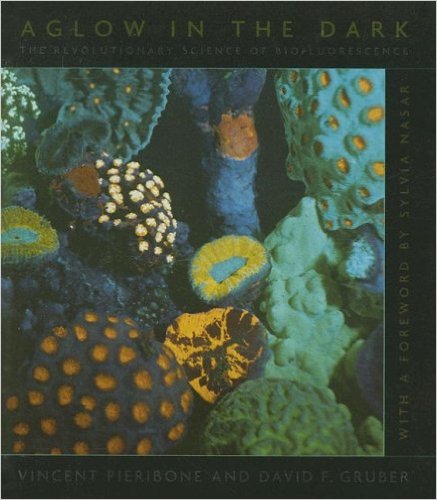














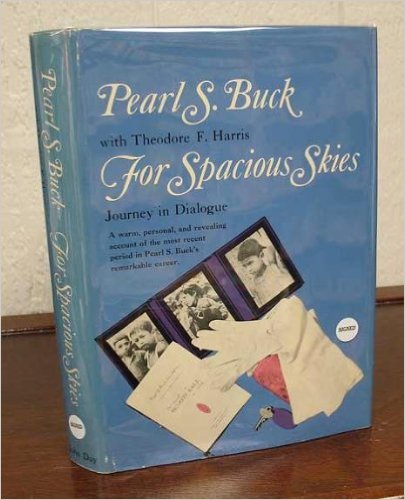














































































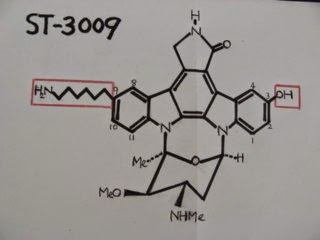







































![アルニカ [ウサギ菊]](https://blogger.googleusercontent.com/img/b/R29vZ2xl/AVvXsEilqv0qou-4NpoUh1PFWYK0FSaozKazee0VYGxsFtfjBma46ya9yxqB6X9Ziuob25tNRpBbnFIcUFlOEjz1WcAjVNzjGl1E-QbDgE7VOLkjZDx0eplJ1WJHf0fTEWXxf8F5G-cHUhqHELY9/s1600/ArnicaS.jpg)


















































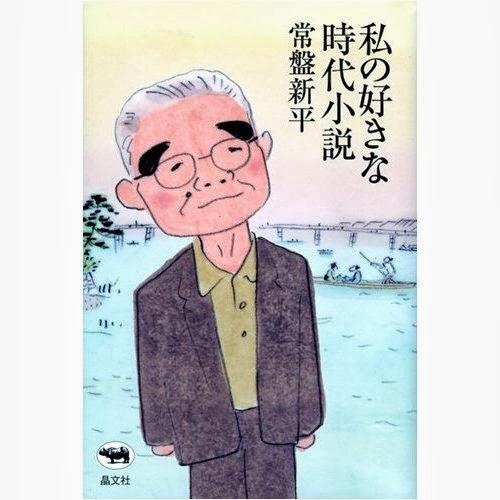










































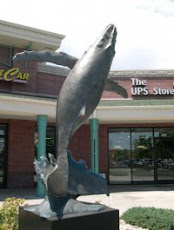










































.jpg)
















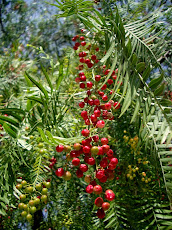















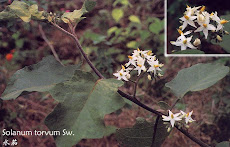







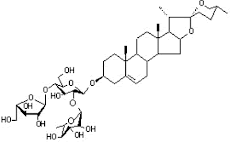















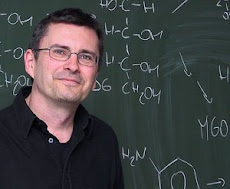


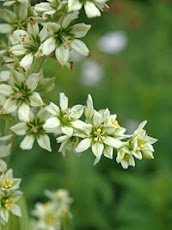












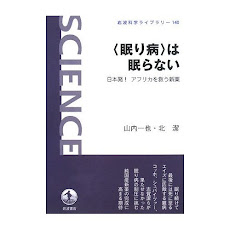












.jpg)















































